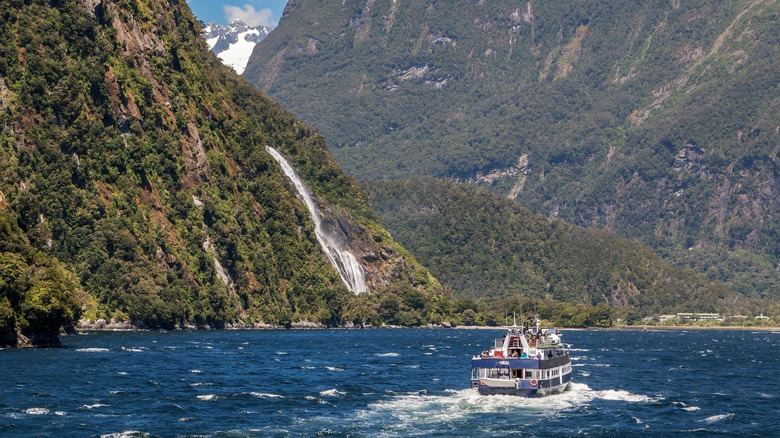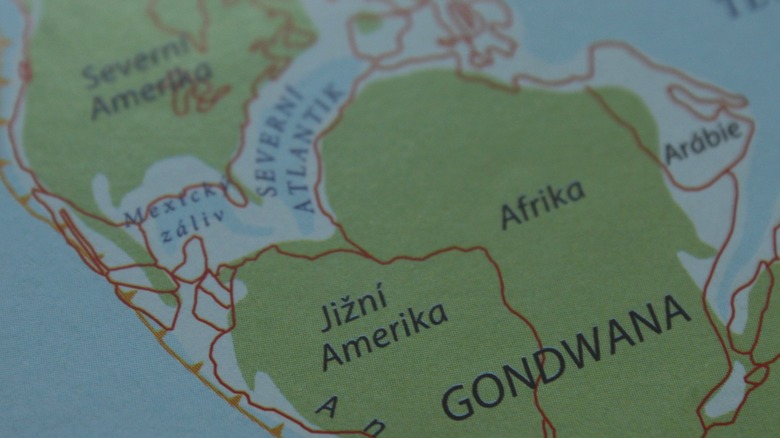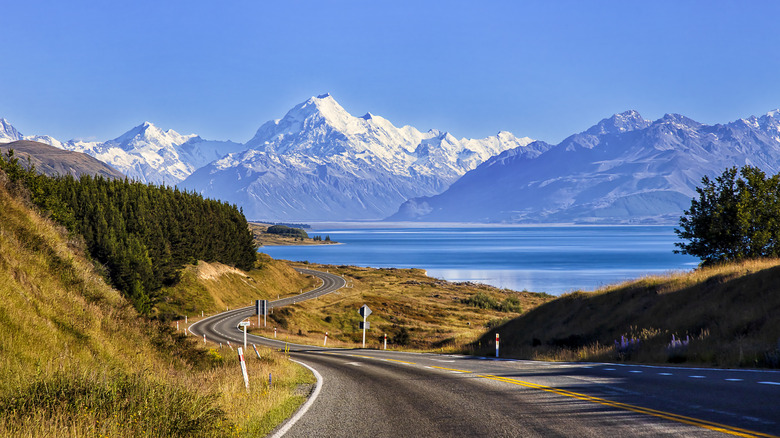The Popular Tourist Destination Considered By Some To Be The World's 8th Continent
If visiting every continent is one of your life goals, you might need to expand your travels to include New Zealand. In 2017, a peer-reviewed article in GSA Today, the Geological Society of America's journal, put forth evidence of a "hidden continent" on Earth. What we think of as New Zealand (or Aotearoa in the Māori language) is really the tip of this continent, which is 94% submerged below water. Hence its name, Zealandia.
To the uninitiated, the idea of a lost continent buried beneath the waves — with New Zealand sitting on top of it — may sound make-believe, like a Kiwi version of the Atlantis myth. It doesn't help that its name morphs a familiar destination into an abstract realm, giving it the same ring as Portlandia, the 34-foot "copper goddess" statue in Oregon's biggest city. Yet the GSA determined that, in its elevation, geology, crustal structure, limits, and area, Zealandia fits the criteria of a continent. As of 2023, the undersea extent of it has also been fully mapped in a way no other continent's has.
This could certainly be news to anyone who grew up learning that the Earth has seven continents and the solar system has nine planets. Between 1930, when Pluto was discovered, and 2006, when it was demoted to a dwarf planet, those numbers were reinforced as basic facts in classrooms. It turns out your schoolteachers may have had both wrong, and there are now eight planets and continents, counting Zealandia.
How Zealandia qualifies as a continent
For nearly 200 years, the continental roll call consisted of the same stalwart names (in order of size): Asia, Africa, North America, South America, Antarctica, Europe, and Australia. Antarctica was discovered in 1820, so it had an even longer history of being the last known continent than Pluto did being the last known planet. Yet the very definition of a continent can be tricky since it just indicates a large continuous landmass. Even the eight-continent model, with Zealandia included, doesn't account for every landmass on Earth.
Madagascar, for instance, is considered a microcontinent, but Zealandia is six times larger than it. At 4.9 million square kilometers, Zealandia is also too big to be labeled a mere continental fragment, according to the GSA. Millions of years ago, it and Madagascar both broke off from the supercontinent of Gondwana, along with Africa, South America, Antarctica, and Australia. As the BBC reported, the geology of Zealandia still matches up with West Antarctica like a puzzle piece.
For travel purposes, you might group New Zealand together with Australia as part of the same region, Oceania. However, Zealandia's continental crust — too shallow to be a tectonic plate — is distinct from Australia's, with the Cato Trough acting as a line of demarcation underwater. This means it's arguably more of a true continent than Europe or Asia, which are only separated by an imaginary line on maps. Geographically, they're considered different continents, but geologically, they're connected to the same landmass, Eurasia.
Explore the islands of the eighth continent
Whether you embrace it as the eighth continent's tip or still just think of it as a country, New Zealand encompasses around 600 islands. In 2013, its two main islands finally made their long-held names official: North Island (or Te Ika-a-Maui, meaning, "the fish of Maui," in Māori) and South Island (or Te Waipounamu, meaning, "the waters of greenstone"). The North Island is where you'll find cities like Auckland and Wellington. Highlights of the natural landscape include Cape Reinga, the Cathedral Cove, and the Waitomo Glowworm Caves — a luminescent New Zealand wonder so spectacular it doesn't feel real. Not far from Waitomo is the country's most popular attraction among travelers on Tripadvisor. It's the Hobbiton movie set, where you can step inside a real hobbit hole from "The Lord of the Rings."
The South Island holds the waters of Milford Sound, the scenic gem of Fiordland. This New Zealand national park is a must-add to an adventure enthusiast's bucket list. Another national park, southwest of Christchurch on the island, is Aoraki / Mount Cook. Take a helicopter tour here over New Zealand's tallest mountain (and Zealandia's highest point above sea level), and you can ponder how far you are from the continent's lowest submerged depths. It could change your whole perception the way the seasons do when traveling between hemispheres. Just when you thought you'd got the lay of the earth and its continents, along comes New Zealand to turn your world upside down.


